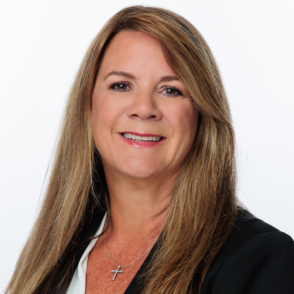The fourth quarter began very different than how the majority of the summer months had transpired from a Natural CAT perspective; as Hurricane Ian used the final few days of Q3 to take aim at Florida’s densely populated gulf coast. Despite mandatory evacuations, fairly accurate forecasting of its path and the usual several days to prepare, its damages were devastating. The tally on its costs remains to a large degree unknown with ranges from industry-leading organizations such as Karen Clark Company (KCC) suggesting $67B with others within ~10%. Important to point out the full impact when tallying both insured and uninsured loss, plus that of the National Flood Insurance Program (NFIP), Marine and Personal auto losses, it is estimated in some circles to exceed the $100B mark. Further, important to bear in mind, the state of Florida was continuing to reel from legislative issues and challenges resulting from earlier years long before Ian made landfall.
As publicly traded Carriers report Q3 financial results following what was a relatively calm quarter for domestic CAT losses, notwithstanding Ian which occurred at the very end of the period on September 28, it is interesting that results were not more robust. Less CATs than forecasted, coupled with Business Insurance reporting on October 5, 2022, that commercial insurance rates rose over 5% in the preceding quarter, a reasonable conclusion would suggest improved results, however, that was not the case for many:
- Enstar the run-off specialist insurer reported a $444M loss for the quarter resulting from “investment volatility”
- Greenlight Re posted a Q3 combined ratio of 115.3%, deteriorating by 10.1 points due to “a worsening expense ratio”
- Powerhouse Allstate reported a net loss of $420M for the quarter primarily due to its bolstering reserves by $875M due to “more severe accidents as well as higher medical and litigation costs.” Allstate further announced its intent to exit California for Homeowners and Condo business plus five additional states for commercial risks
- CNA Financial Q3 profit fell by 50% from the same period last year due primarily to investment losses as stated during their analyst call late last month
- Liberty Mutual, despite an increase in gross written premium of 10.6%, sited both equity market declines in the quarter as well as $835M in Hurricane Ian losses resulting in a Q3 net loss of $353M
Surely a north Atlantic hurricane season that did not live up to its forecast of frequency as estimated earlier this year and Carriers realigning portfolios based on recent activity, would make one reasonably think Carrier financial results would have been better. Within the body of this report, we will delve into various areas of the marketplace with deeper analysis and opinion, but let there be no mistake, premiums will continue to increase into 2023.
RATE
Rates vary greatly depending upon many factors and as always, it is difficult, and candidly unwise, to categorize with a broad statement. Factors such as line of business, individual account loss history, location of risk, loss mitigation techniques employed, overall market appetite, industry classification and more must be factored into the equation.
While generally speaking we have seen several years of increasing rates, primarily due to a prolonged soft market, the dynamics are shifting. Financial inflation and geo-political disparity are fueling the latest concerns among capital providers within the industry for the first time in more than a decade. Unlike the shift in policy rates that commenced in earnest in 2018, we are now seeing direct insurers and reinsurers alike blend rate changes with other tools to control exposure as mentioned throughout this report. Examples include more rigorous policy terms, conditions and clauses including exclusions, retentions, and limit deployment.
While rates may not be increasing at the same pace as the last few years, underlying exposures (Sales, Payroll, Valuations, etc.) are increasing at an alarming rate as the economy gets rolling again following the pandemic trough exacerbated by economic inflation.
This is proven in the recent Q3 analysts’ call of CNA where they stated they are seeing stronger exposure-related premium from inflation-sensitive lines such as Workers’ Compensation, Property, and General Liability. Their CEO went on to say, “We feel good about renewal dynamics,” indicating that while rates may be reaching somewhat of an equilibrium, premium surely is not decreasing, but rather increasing.
CAPACITY
This important element of the P&C marketplace is best described as “guarded.” Suppliers of capacity ranging from the ILS market, reinsurers and net retained risk within Carriers are carefully calculating deployment of limit or aggregate by geography, line of business and more so than ever, how their capacity is distributed. The latter is overly obvious with the increasing number of MGA/MGUs, Insur-Techs and new Programs coming to market.
Further, as discussed elsewhere within this report, a major carrier is exiting specific jurisdictions while presumably redeploying its capacity elsewhere. Such behaviors will become more commonplace as the industry increasingly relies on data, technology, and artificial intelligence to better align deployment of capital to drive improved returns.
Following several industry conferences within the last few months, namely the Wholesale and Specialty Insurance Association (WSIA) marketplace and the Insurance Leadership Forum (ILF) sponsored by the Council of Insurance Agents and Brokers (CIAB), we are closely monitoring the ever-important and pivotal January 1 treaty reinsurance date.
Early signs from our meetings with partners at these events and other global events specifically focused on reinsurance, point toward a turbulent renewal season. The general consensus is that demand will far outweigh supply which of course always results in increased costs. As such, we anticipate substantial rate hikes for property insurance buyers as Ian exacerbated what was already a concern surrounding capacity. Reinsurers were already trying to come to grips with how they would support increased demand on January 1 in light of inflation, supply chain concerns, workforce dynamics and other factors prior to Ian making its way onshore late September.
TERMS & CONDITIONS
Not dissimilar to earlier reporting of this publication, terms and conditions remain extremely fluid with Carriers aiming to clearly manage their exposure through fine-tuning of policy language. Further, Carriers will continue to insist that miscellaneous exposures often included within traditional broad-based policies be excluded and properly placed within the specialty marketplace where it can be underwritten more acutely. Such examples include emerging risk categories such as that posed by Crypto, Blockchain, Cannabis and Cyber to name a few.
From a more traditional perspective, the march toward proper insurance to valuation will continue with Insurers mandating estimates based on current economic conditions. They will of course protect themselves through carefully crafted policy terms and conditions to ensure they are not adversely affected in the event accurate exposure information is not provided during the underwriting process.
Other areas that will continue to attract attention are predominantly within the Casualty sector where Carriers will continue to push for adequate underlying policy attachment points when writing excess liability. While this process has been underway for several years mostly due to social inflation and the so-called nuclear verdicts, it is now exacerbated by financial inflation. Irrespective of the driving force, Insureds should be prepared to increase primary General and Auto Liability limits to meet the attachment point demands of excess liability insurers.
Carriers will also in some instances require insureds to up their game with risk mitigation including items such as driver and vehicle monitoring within Auto Liability, tighter security checkpoints and video surveillance at large gatherings and adherence to increased local, county and state building standards from both a life safety and traditional property peril perspective.
NEW MARKET ENTRANTS
Unlike earlier quarterly reports we have published in the last few years, this category has tamped a bit with few newsworthy updates as of this writing. We do however foresee some potential M&A within the Specialty P&C insurance sector for several reasons.
First, large multi-line global Carriers continue to be bullish on the niche U.S. Specialty sector and while some have established platforms, others do not or have limited operations, therefore are looking to bolster their offerings. For example, it was reported on October 31 that CNA will expand its E&S business in a “modest volume” to take advantage of prolonged hard market conditions.
Second, with rates, terms and conditions truly reaching a level not seen for decades, opportunistic investors are sure to closely scrutinize short-term and medium-term benefits. This could manifest itself in the form of increased M&A in the coming quarters.
Finally, survival of the fittest, while public and mutually traded Carriers are reporting Q3 results that are generally less than optimum, it’s important to note this is primarily the result of volatility in equity markets. The last few years have generally resulted in improved loss ratios, arguably the most important component when tallying total or combined ratios. For this reason, several smaller specialty E&S insurers that have lagged behind their larger peers continue to seek strategic alternatives. Several have also ousted senior executives and are considering changes on their Board of Directors due to less-than-optimum financial performance in what has been widely described lately as the “Golden Age” of the E&S sector. We will be closely monitoring developments within this space and surely update our readers next quarter.
Contributor: Paul G. Smith, Corporate Senior Vice President, Carrier Relations, H.W. Kaufman Group
Q3 2022 OVERVIEW & Q4 FORECAST BY LINE OF BUSINESS
Our industry-leading subject matter experts dissected the marketplace and provided insights on the Burns & Wilcox P&C Market Outlook: Q3 2022 webinar, hosted October 20, 2022.
An early season lull of hurricane landfalls in the U.S. was shattered by the devastation of Hurricane Ian and its Category 4 winds and destructive storm surge on September 28. Catastrophic losses are estimated to be more than $50 billion with an estimated 140 deaths in Florida.
The P&C market was already burdened with several challenges before Ian, and its arrival among other factors will extend the hard market well into 2023. The good news for brokers and agents is there are tools available to help support client needs for limited capacity with the help of Burns & Wilcox and its partners despite what we feel will be a “very hard market” for P&C.
Below, our experts provide further guidance, delving deeper into specific areas with advice and outlook.
Click here to view the complete webinar.
PERSONAL INSURANCE (US)
One of the biggest issues facing the personal insurance market, even before Ian, was less availability of reinsurance options for personal lines in high-CAT areas. This was established with two significant CAT 4 storms in 2017 (Harvey and Maria, each costing well over $100 billion) and Ida in 2021. The increase of damaging convective storms and wildfires only worsened the situation.
As a result, reinsurers have pulled coverage from CAT-prone areas while less capacity is being added from alternative markets such as hedge funds and private capital firms. The financial losses experienced in recent years virtually guaranteed these alternatives would pull back on spending to pursue more conservative options, particularly given the current economic uncertainty.
Reinsurers are being forced to reevaluate exposure in their CAT-prone areas, which includes eastern and gulf coasts from Maine to Texas. As a result, many clients in high-risk areas will see 20-25 percent rate increases in the reinsurance market the last couple of months in the foreseeable future. Those rate increases are largely determined by the supply and demand challenges facing this industry. We expect to see a drastic increase in demand because of the reduction in supply, which naturally will drive those rates higher.
Of particular interest, Ian was much more of a flood event compared to more recent hurricanes outside of Harvey’s impact on Houston and Katrina on New Orleans in 2005. Unfortunately, less than 20 percent of Florida homeowners carry Flood Insurance, meaning many will not have coverage and will look for clauses in their Homeowners’ or commercial policies for payment.
While FEMA relief is an option, the market expects Ian will be an example of the dreaded “creep” event that will play out in court and with public adjusters looking for options to pay these claims. This litigation of denied claims could go on for years as a result along with personal and commercial auto physical damage claims.
Our team understands the importance of taking care of all brokers and agents who are supporting client claims in the P&C space. Burns & Wilcox offers a dedicated claims director combined with a group of specialists to work with retail brokers for timely claims updates and sharing of resources. In times of extreme stress following a major storm or incident, Burns & Wilcox creates a CAT Task Force charged with outlining responsibilities to address serious, immediate issues.
For more information, click here to view our Personal Insurance video highlight.
Contributor: Blaise D’Antoni, Executive Vice President, Burns & Wilcox, based in New Orleans, Louisiana
COMMERCIAL INSURANCE (US)
Property:
Personal is not the only sector that remains in a hard market. All lines in the commercial space remain stressed with carriers exiting specialty classes such as P&C Habitational. Liquor liability markets for restaurants and bars are also experiencing significant rate increases with decreased capacity from carriers that even choose to stay in that market. Additionally, Excess and Umbrella policies are also difficult on large and medium towers for certain classes of business including that of Homeowners Association (HOA) policies which are often flagged as particularly risky for carriers.
This is forcing not just CAT-related commercial, but non-CAT to tighten up underwriting requirements. CAT unprofitability and closer underwriting are driving these trends. Perhaps the only area of softening in the commercial sector is Management and Professional, but even that easing is mild.
Wildfire remains a significant threat for commercial clients in the western U.S. and in pockets across the country. In California, Burns & Wilcox has a unique and exclusive product that allows us to increasingly write more FAIR Plan wraparound policies with limits as high as $5 million total insured value. On top of that Burns & Wilcox offers added protection through Wildfire Defense Systems (WDS), a national leader in private wildfire services, combining professional wildfire consulting with federally certified emergency response wildfire suppression services. WDS has saved hundreds, if not thousands, of commercial entities and homes from wildfire damage.
Additional products to support wildfire protection are available in the commercial and personal sectors as well. Businesses and homeowners needing coverage to protect their assets should contact their local Burns & Wilcox representative as we have a variety of options available.
For more information, click here to view our Commercial Insurance video highlight.
Contributor: Rich Gobler, Corporate Senior Vice President, Managing Director, Burns & Wilcox, San Francisco, California
Casualty:
As mentioned elsewhere in this report, we anticipate continued pressure among Excess Liability insurers to press for increased attachment points on scheduled underlying coverages with particular emphasis on General and Auto Liability. Further, industry classification remains paramount with continued pressure on Habitational accounts as well as Liquor Liability, elder and youth care facilities and any venues with large gatherings (stadiums, houses of worship, music venues and general entertainment).
Capacity within the Casualty sector remains intact, albeit in smaller tranches than perhaps we would like, particularly when building a large tower of limits. This can impact pricing as more participants typically results in more layers or increased quota-share layers driving the ultimate premium higher than it would have been with fewer and larger limit participants. We do not see Carriers any time soon returning to the days of old when they would regularly put up limits that in most instances were double if not more than they are now.
Of particular note, buyers need to keep in mind that carriers are not viewing the last few years of casualty loss trends as typical due to a lull in litigation and legal proceedings resulting from the pandemic. They are rather considering their relatively improved combined ratios as short-lived. This phenomenon coupled with real concerns surrounding financial inflation will result in a marketplace that remains cautious and guided as Casualty policies have long tails with true underwriting results often not known for as many as five years or longer.
The balance of 2022 and 2023 will result in rates that accurately reflect the exposure, individual account loss history and commitment to risk mitigation. Capacity remains plentiful with terms, conditions and rates underwritten specifically to each account and not predicated on underlying pricing as heavily as it once was. Buyers can rest assured that our in-house Excess Liability Programs and our overall market relationships both domestically and globally can fulfill any needs.
Contributor: Paul G. Smith, Corporate Senior Vice President, Carrier Relations, H.W. Kaufman Group
PROFESSIONAL LIABILITY (US)
E&O:
The market has been stable, and that stability is expected to continue into the fourth quarter and beyond. The market also continues to add more capacity and new entrants, another trend that will carry into early next year. Within the Architects & Engineers (A&E) and Contractor space there are some classes that will continue to push rates 10-15% with some exposure increases expected to take ultimate premiums above 50%.
D&O:
The market has softened in 2022 for private company D&O, with insureds seeing reduced or flat rates. This trend is expected to continue into 2023. New entrants will also likely result in potential premium relief as supply increases. Broader terms, better pricing, and greater capacity will also likely continue into 2023.
Other Trends in D&O:
- Capacity increases among larger line insurers from $5-$10 million
- Incumbents are maintaining or agreeing to reductions to maintain positions
- The global economic environment will continue to impact some insureds and their D&O coverage
- The renewal outcome for each client will depend mainly on the business’ financial strength, the sector, and geographic spread
- Cybersecurity will continue to have an impact on D&O and has created some uncertainties in the marketplace. Executives are responsible for maintaining the best cybersecurity practices throughout their workplace and thus protecting their digital assets. If a data breach occurs, a shareholder’s suit may hit directors and officers incredibly hard, thus supplementing D&O insurance for cyber claims.
- Stressed and unpredictable supply chains can lead to D&O claims (i.e., securities class action lawsuits)
Cyber:
The Cyber Insurance market continues to see increases in pricing and tightened underwriting driven by heightened cyber-attacks and claims. Rate increases will continue to increase particularly among insureds with insufficient controls in place. Insureds that have implemented increased controls may see a softening of rate during the next renewal cycle.
There is concern within the marketplace that insureds have become complacent, specifically surrounding securing intellectual property, a growing concern relative to increased claim activity. Cyber hygiene continues to be a key differentiating factor regarding insurability.
In general, primary limits will continue to be a struggle as carriers have decreased capacity for the most part from $10 million to $5 million and lower in some instances. Despite some new entrants in the cyber space, the market remains tight for primary capacity for small- to medium-sized enterprises (SME).
Equally frustrating, larger towers will continue to be hard to fill as many carriers are decreasing their line sometimes by more than 50%. It will continue to be an underwriter’s market with limited capacity, increased rate, and little tolerance for sub-par controls through 2022 and into 2023.
The market continues to be strict regarding controls, particularly Multi-Factor Authentication (MFA) requirements for email, remote access, and privileged accounts along with implementation of Endpoint Detection and Response (EDR). Underwriters are also looking more closely at insureds network(s) and more specifically backup procedures.
There is little tolerance for risks with poor controls, which is expected to continue into the new year. This will be of particular concern for insureds who have remaining control issues from last term.
Contributor: Derek Kilmer, Associate Managing Director, Burns & Wilcox, Detroit/Farmington Hills, Michigan
TRANSPORTATION INSURANCE (US)
In previous P&C reports, we mentioned the competitive pressures in the market caused by upstart proprietary programs. These programs, focused on niche transportation segments, have certainly caused legacy carriers to take notice. Rates, which have grown exponentially over the last 6+ years, appear to be attractive to many of these upstarts. These programs are filling their top line with accounts at rates which are well below current rates charged by long-term insurance carriers, causing top line pressure for legacy carriers. Nuclear verdicts and results may have flattened out over the last 12-18 months; however, we are starting to see a reemergence of increased litigation suggesting nuclear verdicts will once again rear their ugly head.
As we have moved into the early stages of the fourth quarter, we see the compounded pressure of what I like to call “silly season.” Carriers that have held firm to risk appetite and what they deem as appropriate rate, are now likely experiencing top-line budget deficits. To meet production goals, they are now reducing rates and expanding appetite. If history holds true, this will continue until mid-first quarter of 2023 when a return to normalcy is driven by deteriorating results.
There is no doubt that we are we entering uncertain economic times with many suggesting a recession in 2023, however, we are already witnessing transportation risks paying a heavy price. Prices for everything including fuel, parts, maintenance, new equipment, and labor are increasing much faster than freight/contract rates. As a recession looms, lower product demand will exacerbate an already diminishing bottom line for these risks, forcing many to downsize, go out of business or be acquired.
The fourth quarter of 2022 will be challenging for everyone in the transportation segment. Last quarter, we discussed how our industry needs more market stability, yet the fourth quarter will most likely bring anything but. Unlike every new year when we see a relative return to “reasonableness,” the changing economic picture will impact our industry for risks, carriers, and brokers. How our industry responds to the uncertainty very well may determine if we have learned from the past and put ourselves on a path to financial health.
Contributor: Tyler Myers, Director, Transportation, Burns & Wilcox, Dallas/Ft. Worth, TX
ENVIRONMENTAL INSURANCE (US)
Environmental:
The reoccurring trend for 2022 continues to be climate change and weather, which is linked to environmental contamination. Wildfires resulting from changing weather patterns continue to have significant consequences with the spread of contaminants. Couple that with floods due to hurricanes, such as Ian, and increased rainfall, mold claims continue to be on the rise and will continue to be into 2023.
Rates remain flat and in many instances are trending down. This is not in line with standard casualty business, which expects to have another 18 months of a hard market. Capacity continues to be strong in the environmental sector which keeps rate increases in line.
Environmental social governance (ESG) continues to be a focal point and has been more prominent across various industries. Environmental carriers are evaluating insureds who contribute to climate change and price accordingly. ESG represents how an organization approaches climate change and carbon, to name a few, and how prepared the company is to manage operational risk in their third-party ecosystem. The insurance industry is in the early stages of adopting ESG considerations, and we expect to see more movement in the fourth quarter and beyond.
The increase in the frequency and severity of environmental claims is expected to continue into 2023. Pollution incidents are becoming more frequent and severe. This is largely driven by natural disasters such as extreme weather events—wind, flood, wildfire, earthquakes, climate change, and human-made environmental disasters. Mold and Legionella claims are on the rise. Mold claims have already had a major impact on the market and will continue through 2023.
In addition, claims continue to increase due to perfluoroalkyl and polyfluoroalkyl substances (PFAs), also known as “forever Chemicals.” The Environmental Protection Agency has advised that exposure to the man-made chemicals have been linked to adverse human health risks. In addition to PFAs, another forever chemical which continues to be on the radar for regulators and insurers is glyphosate which is found in weed-killing products with several lawsuits pending.
The demand for Pollution Legal Liability continues to grow with 2023 expected to continue that trend. Contractors Pollution Liability was strong in 2022 and we see that continuing in 2023 as well primarily due to the increase in construction activity as well as mergers and acquisitions emerging from the pandemic.
Tightening terms and conditions continue to point to a hardening market with carriers adding higher deductibles and pulling back on limits and capacity. This points to rates potentially stabilizing in 2023 after being soft for over 10 years.
Energy:
The Energy sector is in a financially healthier place in 2022. While it remains in a hard market with capacity challenges, global oil production and consumption has climbed to pre-pandemic levels, and rig activity is up significantly. The price of a barrel of crude oil is consistently above $100 as of June 2022, roughly 50 percent higher than prices 12 months ago. Higher demand with an uptick in travel for Canadians and Americans yield a lower supply.
Beyond geopolitical factors, investments in ESG programs and technologies supporting those programs are growing as well. This is a result of governmental regulations and mandates, corporate desires and general consumer will. Energy companies are investing in technologies designed to capture emissions and improve efficiencies to reach net zero carbon emissions in the years ahead. Brokers and agents are regularly working with clients to address ESG planning, which includes finding policies that support such efforts as landfill strategies, thermal recovery, lead reduction and more.
Through Burns & Wilcox, we have binding authority in-house, access to an exclusive Oil & Gas Consultants Program, and a broad appetite for renewable energy risks. The professionals at Burns & Wilcox have the experience and industry connections to identify the best solutions and secure options for any insurance need. This includes the ability to package General Liability, Pollution, Professional Liability, Companion Auto, Companion Workers Comp, Property, Inland Marine, Excess and Cyber policies.
Renewables represent another area of growth for the Energy industry. Many energy companies in the U.S. are investing in more renewable innovations such as windmills and solar technologies, the latter more possible because of advancements in storage technologies and solar batteries. The insurance industry is adding investments in these areas too, with more retailers and brokers establishing renewable divisions of experts. Renewable energy will comprise an even larger share of the market as investments grow.
As the Energy industry continues to evolve with global and economic trends, building and maintaining strong relationships with carriers is critical for brokers and agents to ensure access to available coverage for clients. Quality submissions that answer all required questions, while providing any additional profile details, is advantageous. Creativity in identifying available solutions, selling based on coverage and value rather than price, and partnering with multiple carriers positions brokers and agents favorably no matter how oil and natural gas prices fluctuate.
Contributor: Gina Jones, Vice President, Director, Environmental Programs, Burns & Wilcox, Denver, Colorado
PERSONAL INSURANCE (CANADA)
Severe weather patterns continue to impact the Personal Insurance Property market. The extent of loss exposure following wildfire and hurricane activity in the third quarter has yet to be fully determined but will inevitably continue to place pressure on profitability and therefore, capacity and rate moving forward. We can expect insurers to continue to evaluate and adjust eligibility standards and underwriting expectations to remain financially stable.
Furthermore, interest rate hikes in the third quarter have influenced home sales and caused properties to remain vacant while on the market for longer periods of time. Most residential vacant home insurers will non-renew business after a specified period of vacancy, which in turn requires that it be addressed in the hard-to-place insurance market.
Additionally, there continues to be high demand for distressed personal risks such as short-term rental homes, multiple private or public lender risks, insureds with prior loss experience, and unprotected secondary or seasonal properties. Our team remains dedicated to developing creative solutions for an ever-evolving hard-to-place insurance environment.
Contributor: Michelle Allemang, Manager, Western Canada, Personal Lines, Burns & Wilcox, Toronto, Ontario
PROPERTY & CASUALTY (CANADA)
The four-year anniversary of recreational cannabis legalization in Canada just passed on October 17, 2022, and there are now over 900 licensed cannabis producers across the country. There has been an influx of Micro cultivation licenses being issued from coast to coast, likely because of the smaller financial commitment required to start the business and receive Health Canada Licensing. Competitive pricing is present on all lines of business, including, but not limited to, Property, Liability, Product Recall and Equipment Breakdown for all growers.
Retail brokers confirm that expertise and top-of-class service standards are key to selecting underwriters. Along with that, possessing access to both domestic and London carriers with capacity on all different types of cannabis risks, including Standard Cultivators, Micro Cultivators, Personal Medical Growers, and Medical/Recreational Dispensaries, provides a needed solution for the marketplace. This includes capabilities to write building owners of all the types of risks listed above.
Over the past quarter, premium for small cannabis dispensaries has become increasingly competitive. Rates have steadied, particularly on buildings that are top of class (Protected and Non-Combustible buildings).
In the fourth quarter, we expect to see the number of Health Canada growing licenses continue to rise, with emphasis in the micro-cultivation space. There is potential for fewer new cannabis dispensaries in highly populated cities due to the sheer amount of them already operating. Rating on property should continue to steady in the marketplace over the coming months and into 2023.
Contributor: Patricia Sheridan, Director, Ontario Commercial Insurance, Burns & Wilcox, Toronto, Ontario
PROFESSIONAL LIABILITY (CANADA)
Increased marketing efforts from retail brokers continued during the third quarter and this trend is expected to continue for the remainder of the year and into 2023. Markets, however, continue to review their portfolios and impose rate increases and coverage restrictions on many classes of professional liability. There is increased pressure on businesses to maintain/purchase Cyber cover – with limited capacity in the market (for certain sectors and sizes of businesses).
Contributor: Paula Lansky, Manager, Professional Lines, Burns & Wilcox, Toronto, Ontario
TRANSPORTATION INSURANCE (CANADA)
The Excess Umbrella market remained extremely firm as rates continued to remain steady with no new capacity coming online. We are working with several markets that are now considering offering capacity, but at much higher prices than in previous years. Brokers continue to struggle to find the liability coverage insureds require. As U.S. courts work to unwind liability case backlogs related to auto accidents, more information should emerge over the next several quarters regarding loss trends. Market-moving jury awards will likely emerge from COVID and pre-COVID events that may further firm markets. We are cautiously optimistic that some additional capacity will emerge over the next 12 months if severity trends do not accelerate.
Motor Truck Cargo markets remained relatively stable in the third quarter of 2022. Rates remained firm, but availability is not constrained. Some new businesses opened as the pandemic receded adding capacity to the Trucking market. Although we would expect some economic challenges from higher interest rates, the impact of expected rate increases has not had any material impact on the volume of shipments to date. This could change, however, as central banks double their efforts to fight inflation.
Contributor: John McGlynn, Director, Transportation, Burns & Wilcox, Toronto, Ontario
ENVIRONMENTAL INSURANCE (CANADA)
Rate erosion remained a factor in the third quarter. While continued price softening was anticipated, a further phenomenon has been observed—many competitors (some prominent tier 1 carriers) drastically reducing pricing. In some cases, 50% decreases were observed. While it is customary and expected that the so-called “fire sale” phenomenon will be seen in late Q4, this year it was observed far earlier with significant reductions.
Paradoxically, market appetites continue to be somewhat tighter than usual. Underwriters remain bearish for the most part on such risks as bulk haulers, dry cleaners, mining, O&G, older underground tanks and such factors as voluntary site investigation and site development.
Q3 saw less conversations around clients opting to “go without” Environmental insurance because of adverse economic impacts of the pandemic and current financial climate. This leveling off is likely due in part to certain financial and regulatory stakeholders holding firm and/or increasing mandatory requirements for carrying the coverage. Entities such as BDC and CCDC continue to impose robust requirements of clients to carry adequate Environmental insurance coverage.
Going into Q4 and considering the above, it is expected that the small business tranche (characterized by low complexity/high volume) is somewhat leveraged as this business operates at a thin margin. This said, medium-to-larger risks (higher complexity and hence price point) remains volatile given above market conditions. This presents both an opportunity to win new business as well as challenges in retaining existing business due to extremely aggressive pricing leading up to year-end.
The winning strategy will continue to involve a) sustainable pricing (i.e., a balance between competition and adherence to sound underwriting), b) demonstrating technical knowledge/added value to clients, and c) staunch emphasis on strong broker relationships.
Contributor: Karim Jaroudi, Manager, Environmental, Burns & Wilcox, Toronto, Ontario
FORWARD FORECAST (LONDON MARKET)
In the third quarter we saw the London market continue the strategic pattern as with the prior months of 2022— increasing rates and improving terms and conditions wherever possible, only releasing/maintaining catastrophe aggregate where the modeled return was deemed sufficient.
Distribution has continued to be tightly controlled. The market has been rewarding MGAs with additional aggregate levels where the mandated tighter terms and conditions have been achieved, removing or reducing aggregate from those that have not. The goal of carriers remains to improve (reduce) average annual losses (AALs) in key catastrophe zones by increasing the average quality of the in-force portfolio. Underwriters expect renewal retention ratios to reduce in order to improve the in-force book more quickly.
The quiet hurricane season through late September had increased hopes that a less-than-average U.S. catastrophe bill for 2022 was possible. This obviously changed when Hurricane Ian made landfall in Florida on September 28. We have all seen the devastation caused by the category 4 winds and the powerful storm surge. Initial insured loss estimates are in the $60-70bn range at the top end, but a more precise number will not be known for many months. The inflationary factor, along with litigation concerns are the major unknown factors at this stage.
So what does this mean for the fourth quarter and beyond? We still have several weeks of the hurricane season remaining, and once we know what happens during the remainder of the season we will have a better understanding of how impactful this season will be on the London market’s view of U.S. Catastrophe risk.
We will begin to see whether the legislation passed in the second quarter, in an effort to help stabilize the Florida personal lines market by influencing policyholders’ approach to claims, will be effective. The final bill for Ian will be heavily determined by this factor alone. Ian’s net loss on individual carriers will be more costly this year than if it had occurred during 2021 as both reinsurance retentions and reinstatement premiums are likely to be significantly higher this year. We should expect U.S. catastrophe capacity to become more scarce and therefore more expensive.
It is reasonable to assume the hard market will continue for several more quarters, and we will be asked to impose even tougher terms and conditions as syndicates adjust their modeled assumptions increasing AALs further. All of these factors will continue to put more pressure on lowering non-cat attritional loss ratios (both in CAT and non-CAT regions), which will be achieved with rate increases and tighter risk selection.
For more information, click here to view our London Market video highlight.
Contributor: Laura Bates, Corporate Senior Vice President, H.W. Kaufman Group, and London Market Practice Leader, Burns & Wilcox, Detroit/Farmington Hills, Michigan
CONCLUSION/SUMMARY
As I am sure you will agree, there are plenty of moving parts within the Specialty/E&S marketplace based on the global macro-economy, expanding population, emerging risks, changing political climate, tightening workforce, well-aligned plaintiff’s bar, and general consensus among global (re)insurers that they must remain financially sound to meet their obligations. Each of these, plus other factors keep us busy monitoring trends, developing new products, carefully aligning with risk-bearing partners and working closely with our clients to underscore the importance of accurately identifying and quantifying risks.
Our global footprint coupled with our nimble and cohesive structure that underscores collaboration among our teams around the world is unparalleled. Our private, family ownership affords us the unique opportunity to control our market position unlike any other organization with ongoing cooperation among our associates regardless of location or business unit. We at Burns & Wilcox and the wider H.W. Kaufman Group are prepared like never before to assist our clients through the current and ongoing dynamics associated with the specialty/E&S marketplace.
Please feel free to reach out to your local office or trusted contact within Burns & Wilcox or any of us contributing to this report.
Thank you for your business and trust instilled in us.
Contributor: Paul G. Smith, Corporate Senior Vice President, Carrier Relations, H.W. Kaufman Group
Disclaimer: The above information has been prepared solely for the purpose of sharing general information regarding insurance and business practice management issues. These are just our opinions and are not intended to constitute legal advice or a determination on issues of coverage.














